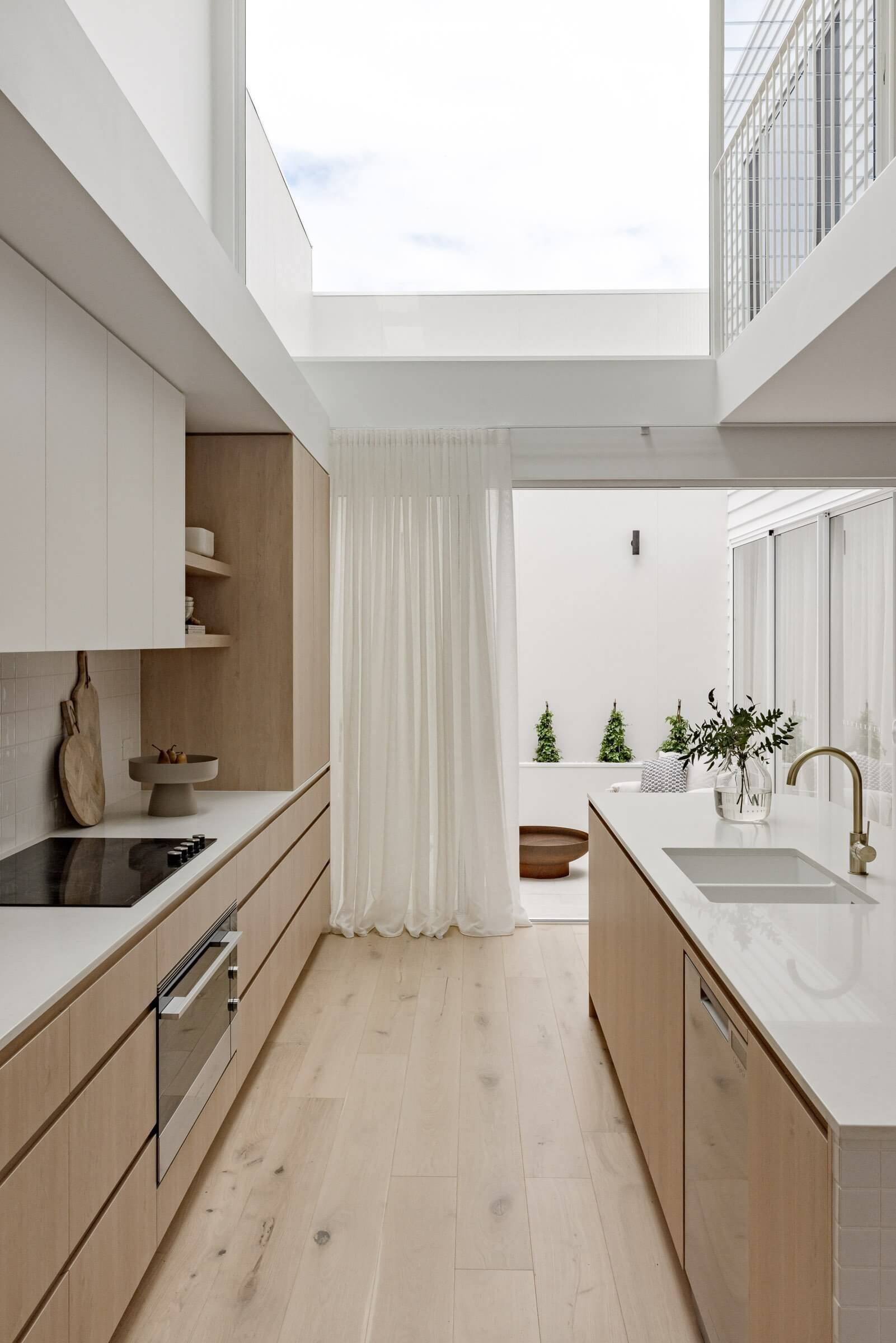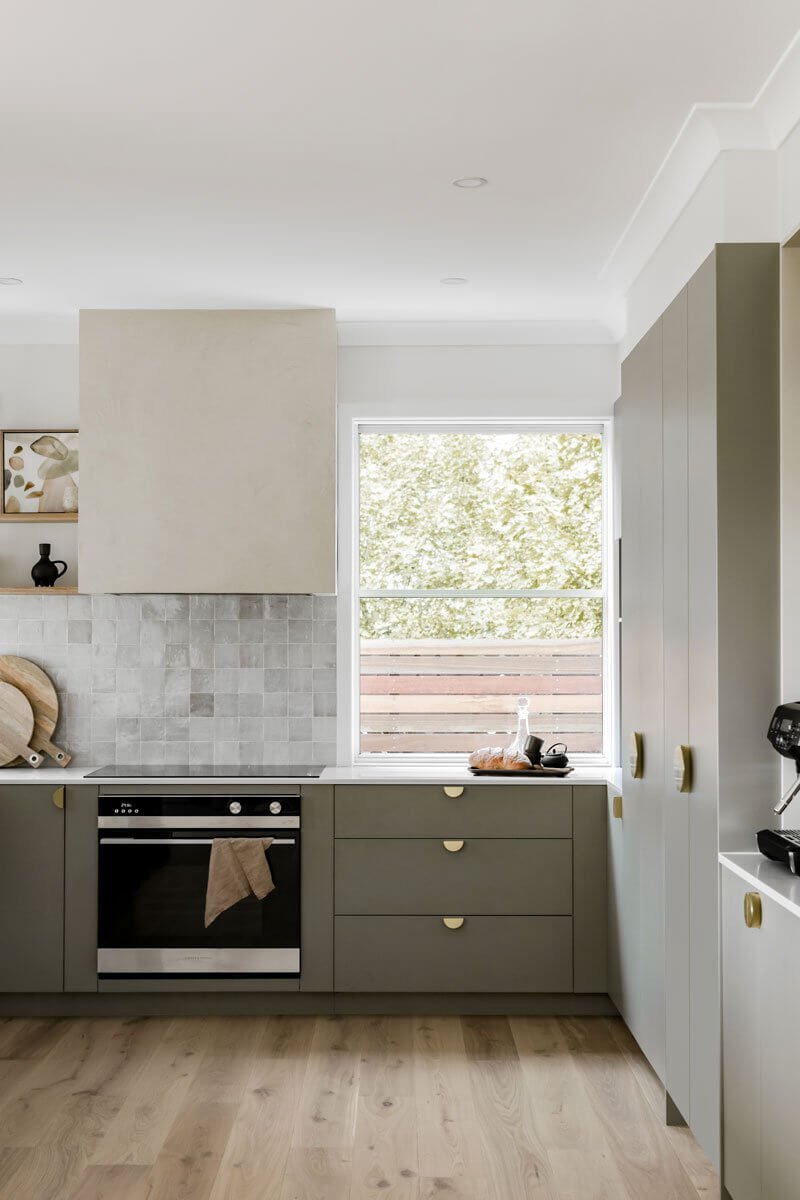Building And Renovating: How To Avoid Common Budget Blow-Outs
Building or renovating your dream home is exciting, but DEFINITELY not without its challenges... especially when you don’t have a clear project roadmap.
Unexpected hiccups can throw even the most carefully laid project plans off track. From surprise reno costs to supplier delays, there are common building and renovation pitfalls you can avoid, and those you cannot. We’re delving into both — and most importantly, providing practical tips on what to plan for and how to sidestep avoidable costs, when home building or renovating. Ready? Let's dive into some of the home truths of #renolife…
Zephyr and Stone • Building and Renovation Tools
Building Demolition Costs
Whether you’re embarking on a small renovation or knocking down an old home to build a new one from scratch, demolition costs are inevitable. Allocating a sufficient budget for demolition costs like labour, waste removal and skip-hire, is crucial to avoid a cost overrun right at the onset of your project.
Demolition cost for a house will vary significantly based on the scope of works and the amount building debris generated, so make sure you factor this into your building or renovation budget from the get-go, to avoid these common budget oversights:
Demolition.
Rubbish removal
Skip hire
Asbestos removal
Electrical, plumbing, gas + other safety measures related to demolition
Temporary power
Tile Cloud • Bathroom Renovation Budget Costs
Unavoidable Renovation Costs
Especially when renovating, we’re often faced with unavoidable surprises… like discovering outdated wiring or uncovering hidden water damage. These unavoidable costs can quickly add up and put a strain on your renovation budget, but there is a surefire way to minimise the impact, and that’s by planning a contingency for budget overruns!
Having a project contingency means setting aside funds in your budget for events that may, or may not happen. You should have a contingency for every home improvement project, but the recommended amount differs depending on the scope of work. For new builds where there is less likelihood of surprises, a budget contingency of 10% is generally enough. However, when it comes to renovations of older homes, you never really know what you might uncover, especially when you start stripping back that funky 60’s wallpaper. That’s why a renovation contingency should always be higher than that of a new build, with a percentage of 15-20% recommended. Using a Renovation Cost Calculator and Budget Tracker allows you to add the contingency percentage relevant to your project, which will adjust accordingly as you get quotes and plan your project costs. Here are a few of the more common unavoidable expenses that you might find hidden in your home:
Structural damage: like cracks in the slab, water damage, sunken footings
Termites or pest infestation
Dated or dodgy electrical wiring
Building structures or elements that do not meet current building codes, and need to be updated and addressed to meet code.
Z+S Tip • You don’t have to spend your contingency, but having it there in your budget from the onset sets your project up for success and will help avoid nasty surprises. A good contingency can also cushion the blow of changes or mistakes that might occur during construction.
Sarah Yarrow Interiors • Kitchen Renovation Budget Tips
Mandala Beach House • Building Project Budget Tips
Budget Blow-Outs Due To Project Delays
It’s a hard truth, but a building project generally takes longer and often costs more than expected #aintthatthetruth. Your building budget can take a massive hit if your project timeline is pushed out, so it’s really vital that you make sure you’ve covered each of the points below before you start, to ensure a renovation process that’s as smooth as possible:
Trade and product availability: Lock in Tradespeople, secure start dates, and secure stock with deposits. This is especially critical as we approach Christmas or Summer holidays, where some businesses can shut their books for new orders several months out.
Weather: Wet weather or extreme heat waves can cause time delays, while severe weather events can cause structural damage and unexpected repairs. This can also mean having to extend your lease if your project isn’t completed on time. Having building insurance or a building contract with contingencies can help with the impact of extreme cases.
Changing your mind: Changes to your design or finishes will hold up your project, especially if something has to be moved or reworked on-site. This is a common project hold-up that will also have your builder frustrated as it causes stop-starts and delays. You can avoid changes by ensuring your design and specifications are thoroughly planned with detailed drawings from the get-go. Engaging an interior designer to provide cabinetry plans, colour and sample finishes and detailed drawings is a worthwhile exercise that often costs less than changes and mistakes could cost you!
Budgeting before you begin: Guesstimating is not a budgeting plan. You might feel like you can wing it, but trust us, costs differ greatly between projects — depending on the finish specification and room designs. Having an accurate budget plan, will not only help alleviate project delays but reduce stress.
Kate Lawrence Interiors • Building and Renovating Project Budget Tips
Noa By The Beach • Building and Renovating Project Budget Tips
Renovation Furniture Budget
When envisioning your dream home, it's common to overlook a furniture budget amidst all the excitement of choosing paint colours and carpet. Picture this: a spacious media room with a grand modular couch, as outlined on your floorplans. However, what might come as a surprise is the price tag — around $4k-$10k. Likewise, if you're planning to upgrade your 6-seater dining table to a new 12-seat setting, it won’t come cheap.
Incorporating a furniture allocation or estimate into your project budget is key to maintaining control and avoiding budget overruns. Furniture planning should occur during the design phase of building or renovation planning.
Planning exact furniture might be a bit tricky, as you might like to experience your new space firsthand before selecting the perfect pieces. However allocating a budget for furniture and home decor you know you’ll need, will ensure there are funds for the pieces you have your heart set on when it comes to move-in day. If you have storage space available, you might also consider taking advantage of sales events like EOFY or Black Friday for discounted prices. Alternatively, while moving in with your existing furniture may not be as satisfying, it allows time to carefully choose pieces that align with your style and budget.
Z+S Tip: Don't forget to allocate a budget for delivery costs, especially when purchasing directly from suppliers. These expenses can accumulate quickly and impact your building or renovation budget significantly.
DNA of Design • Renovation Project Furniture Budget Tips
DNA of Design • Renovation Project Furniture Budget Tips
Landscaping and Finishing Touches
Landscaping and finishing touches like window furnishings, take any design to the next level, and the effort you’ve put into your building or renovation project can certainly be dampened if you’re looking out onto a bare fence and turf from every window.
It might be tempting to leave landscaping and smaller details like curtains for the tail end of your renovation or building project, but here's a friendly word of advice: don't! These elements can make a world of difference in the overall look and feel of your space. Landscaping, for instance, takes time to mature and settle into its surroundings, so getting started early ensures a lush, inviting outdoor space when you're ready to move in. As for curtains, they're not just about aesthetics — they play a significant role in controlling light, privacy, and even energy efficiency, and not adding them to your budget sets you up for budget overruns.
By addressing these elements sooner rather than later, you'll have a more seamless and well-rounded project completion. You’ll also thank yourself later for incorporating these costs into your building or renovation budget from the start, as high-quality landscaping and window furnishings can be more expensive than you might think.
Linda Scott • Exterior Landscaping Renovation Budget
Inflation And Prices Rise
In today's market, it's crucial to be mindful of the rising costs associated with both building and renovation projects. Factors like increased material and labour costs are sometimes unavoidable. This makes it imperative to carefully plan and allocate your building or renovation budget to factor in these costs:
Contractors and trades quotes are usually valid for 1 month after which they need to be revised. Trades and suppliers may also increase their fees at the start or mid-way through the year.
Construction costs can go up on average, as high as 10% each year. If your project spans across months, prices for things like timber, steel, etc. might go up. Locking in contracts, and orders and paying deposits can mitigate the risk of this budget blow-out.
Products like flooring, fittings, fixtures and furniture also tend to go up in price — so sticking to your project timeline and making concise decisions will help keep your building or renovation budget on track.
Blue Lagoon Residence • Exterior Facade Building Budget
Not Hiring The Right Contractor
If you’ve done your due diligence when choosing a builder, you will have at least 3 quotes, but might be left wondering why they are all very different!? A common renovation budget blow-out we see is when contracts are not carefully read, inclusions are missed, and a cheap or inexperienced contractor is hired. To avoid surprises:
Ensure your contract allows for a level of finish that meets your expectations. Having a full schedule of finishes will help your builder provide an accurate quote.
Ask to see your builder or contractor’s recent work or to speak to a past client. Choosing an experienced contractor is worth every cent and can often cost you less in the long run.
Before taking on a builder for your new build or renovation project, read your contract carefully and always ask for a detailed quote so that you understand what’s included. Ensure your builder is licensed, has insurance and can provide all the completion certificates you’ll need to show that work has been completed to code.












